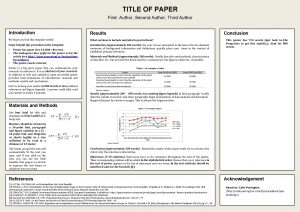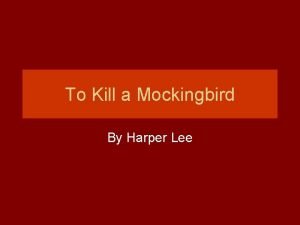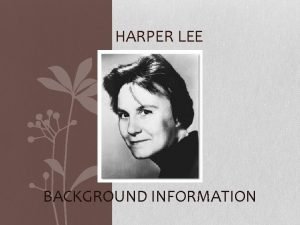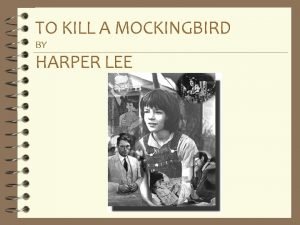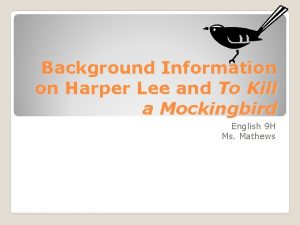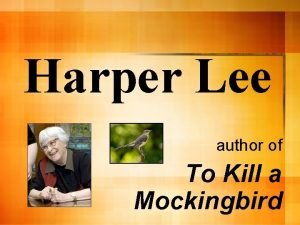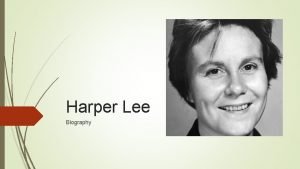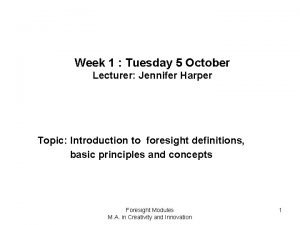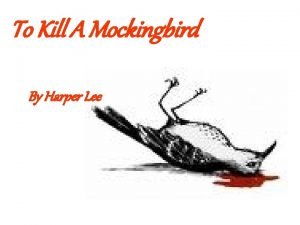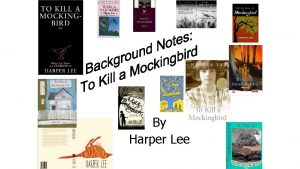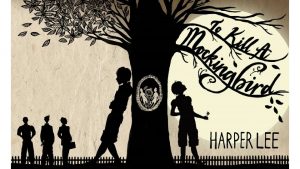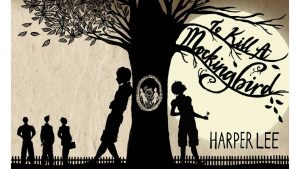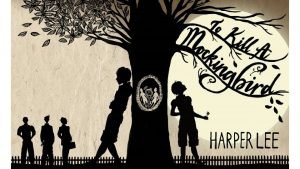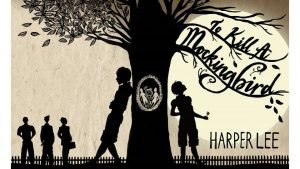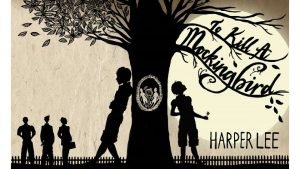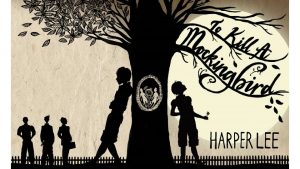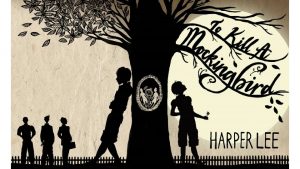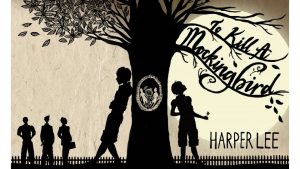Harper Lee 1926 2016 Famed author Nelle Harper














- Slides: 14

Harper Lee (1926 -2016)

Famed author Nelle Harper Lee was born on April 28, 1926, in Monroeville, Alabama. Lee is best known for writing the Pulitzer Prizewinning novel To Kill a Mockingbird (1960). The youngest of four children, she grew up as a tomboy in a small town. Her father was a lawyer, a member of the Alabama state legislature and also owned part of the local newspaper. For most of Lee's life, her mother suffered from mental illness, rarely leaving the house. It is believed that she may have had bipolar disorder.

One of her closest childhood friends was another writer-to-be, Truman Capote (then known as Truman Persons). Tougher than many of the boys, Lee often stepped up to serve as Truman's protector. Truman, who shared few interests with boys his age, was picked on for being sensitive and for the fancy clothes he wore. While the two friends were very different, they both had difficult home lives. Truman was living with his mother's relatives in town after largely being abandoned by his own parents.

In high school, Lee developed an interest in English literature. After graduating in 1944, she went to the all-female Huntingdon College in Montgomery. Lee stood apart from the other students—she couldn't have cared less about fashion, makeup or dating. Instead, she focused on her studies and writing. Lee was a member of the literary honor society and the glee club. Transferring to the University of Alabama at Tuscaloosa, Lee was known for being a loner and an individualist. She did make a greater attempt at a social life there, joining a sorority for a while. Pursuing her interest in writing, Lee contributed to the school's newspaper and its humor magazine, the Rammer Jammer, eventually becoming the publication's editor.

In her junior year, Lee was accepted into the university's law school, which allowed students to work on law degrees while still undergraduates. The demands of her law studies forced her to leave her post as Rammer Jammer editor. After her first year in the program, Lee began expressing to her family that writing—not the law— was her true calling. She went to Oxford University in England that summer as an exchange student. Returning to her law studies that fall, Lee dropped out after the first semester. She soon moved north to follow her dreams to become a writer.

In 1949, a 23 -year-old Lee arrived in New York City. She struggled for several years, working as a ticket agent for Eastern Airlines and for the British Overseas Air Corp (BOAC). While in the city, Lee was reunited with old friend Capote, one of the literary rising stars of the time. She also befriended Broadway composer and lyricist Michael Martin Brown and his wife Joy.

In 1956, the Browns gave Lee an impressive Christmas present—to support her for a year so that she could write full time. She quit her job and devoted herself to her craft. The Browns also helped her find an agent, Maurice Crain. He, in turn, was able to get publisher J. B. Lippincott Company interested in her work. Working with editor Tay Hohoff, Lee worked on a manuscript set in a small Alabama town, which eventually became her novel To Kill a Mockingbird.

Later that year, Lee joined forces with Capote to assist him with an article he was writing for The New Yorker. Capote was writing about the impact of the murder of four members of the Clutter family on their small Kansas farming community. The two traveled to Kansas to interview townspeople, friends and family of the deceased and the investigators working to solve the crime. Serving as his research assistant, Lee helped with the interviews, eventually winning over some of the locals with her easygoing, unpretentious manner. During their time in Kansas, the Clutters' suspected killers, Richard Hickock and Perry Smith, were caught in Las Vegas and brought back for questioning. Lee and Capote got a chance to interview the suspects not long after their arraignment in January 1960. Soon after, Lee and Capote returned to New York. She worked on the galleys for her forthcoming first novel while he started working on his article, which would evolve into the nonfiction masterpiece In Cold Blood. The pair returned to Kansas in March for the murder trial. Later that spring, Lee gave Capote all of her notes on the crime, the victims, the killers, the local communities and much more.

Soon Lee was engrossed in her own literary success story. In July 1960, To Kill a Mockingbird was published and picked up by the Book-of-the-Month Club and the Literary Guild. A condensed version of the story appeared in Reader's Digest magazine. The work's central character, a young girl nicknamed Scout, was not unlike Lee in her youth. In one of the book's major plotlines, Scout and her brother Jem and their friend Dill explore their fascination with a mysterious and somewhat infamous neighborhood character named Boo Radley. The following year, To Kill a Mockingbird won the prestigious Pulitzer Prize and several other literary awards. Horton Foote wrote a screenplay based on the book and used the Lee's beloved 'To Kill a Mockingbird' same title for the 1962 film adaptation. Lee visited characters Scout (Mary Badham), Atticus Finch (Gregory Peck) and Jem (Phillip Alford) the set during filming and did a lot of interviews to found even more fans in the 1962 film support the project. Earning eight Academy Award adaptation. nominations, the movie version of To Kill a Mockingbird won three awards, including best actor for Gregory Peck's portrayal of Finch. The character is said to have been based on Lee's father.

That same year, Lee had an operation on her hand to repair damage done by a bad burn. She also accepted a post on the National Council of the Arts at the request of President Lyndon B. Johnson. During the 1970 s and '80 s, Lee largely retreated from public life. By the mid-1960 s, Lee was reportedly working on another novel, but it was never published. Continuing to help Author Harper Lee in her Capote, Lee worked with him on and hometown of Monroeville, off on In Cold Blood. She had been Alabama in 1961. invited by Smith and Hickock to witness their execution in 1965, but she declined. Capote's book was finally published in 1966.

Harper and Alice Lee spent some of her time on a nonfiction book project about an Alabama serial killer which had the working title The Reverend. This work, however, was never published. Lee generally lived a quiet, private life, splitting her time between New York City and her hometown of Monroeville. In Monroeville, she lived with her older sister Alice Lee, a lawyer who the author called "Atticus in a skirt. " Lee's sister was a close confidante who often took care of the author's legal and financial affairs. Active in her church and community, Harper Lee became famous for avoiding the spotlight of her celebrity. She would often use the wealth she had accumulated from her success to make anonymous philanthropic donations to various charitable causes.

In November 2007, President George W. Bush presented Lee with the Presidential Medal of Freedom for her "outstanding contribution to America's literary tradition" at a ceremony at the White House

'Go Set a Watchman, ' Harper Lee's second novel. Go Set a Watchman features Mockingbird's Scout as a 26 -year-old woman on her way back home to Maycomb, Alabama, from New York City. In Watchman, Scout's father Atticus, the upstanding moral conscience of To Kill a Mockingbird, is portrayed as a racist with bigoted views and ties to the Ku Klux Klan. In Watchman, Atticus tells Scout: "Do you want Negroes by the carload in our schools and churches and theatres? Do you want them in our world? ” The controversial novel and shocking portrayal of a beloved character sparked debates among fans on the Internet, and offered literary scholars and students fodder for analyzing the author's creative process. Lee's second novel also broke pre-sale records for publishing house Harper. Collins and was on target to become one of the fastest-selling literary works in history.

Harper Lee died on February 19, 2016, at the age of 89. Her nephew, Hank Connor, said the author died in her sleep at an assisted living facility in Monroeville.
 First author second author third author
First author second author third author Harper lee short biography
Harper lee short biography What is the genre of how to kill a mockingbird
What is the genre of how to kill a mockingbird Harper lee background information
Harper lee background information To kill a mockingbird by harper lee summary
To kill a mockingbird by harper lee summary Short summary of to kill a mockingbird
Short summary of to kill a mockingbird Harper lee background information
Harper lee background information Tkam chapters 1-4 summary
Tkam chapters 1-4 summary Harper lee sandra bullock
Harper lee sandra bullock When and where was harper lee born
When and where was harper lee born Jennifer harper-lee
Jennifer harper-lee Qt on mockingbird and 35
Qt on mockingbird and 35 Harper lee birth
Harper lee birth Benner camed
Benner camed Simboli cristiani nelle catacombe
Simboli cristiani nelle catacombe
